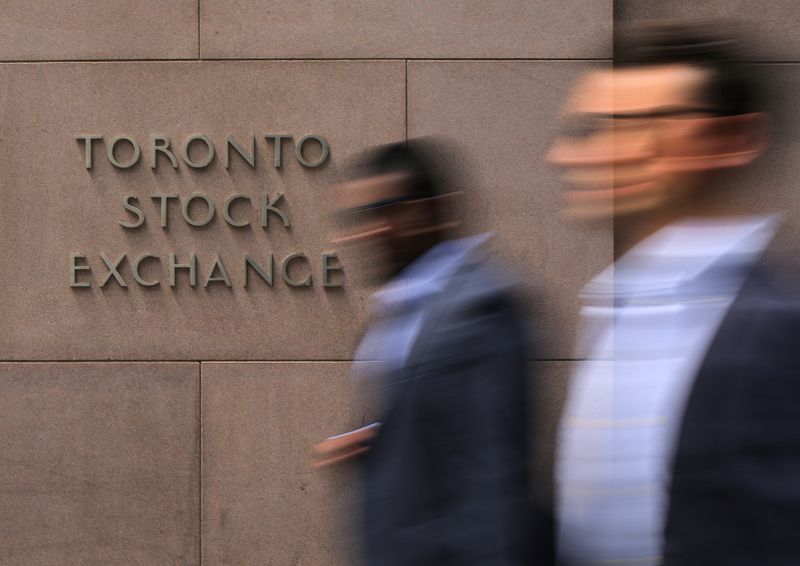JFrog stock rises as Cantor Fitzgerald maintains Overweight rating after strong Q2
Investing.com - Canada’s main stock exchange ended lower on Tuesday, as investors poured through U.S President Donald Trump’s latest salvo in his aggressive trade agenda.
The S&P/TSX Composite index settled down 0.43%, shedding 116 points at 26,903.57.
Sentiment was dented as the investors awaited Trump’s tariff announcements, which included his decision to send letters to multiple countries detailing the higher levies they could face. Trump also extended a tariff deadline back from July 9 to August 1.
New deadline and tariff threats
US stocks slipped as investors assessed the economic impact of U.S. President Donald Trump’s latest salvo in his aggressive tariff agenda.
At 4:00 p.m. ET (20:00 GMT), the Dow Jones Industrial Average fell 165 points, or 0.4%, while the S&P 500 index fell 0.1%, Nasdaq composite added 0.03%.
Trump on Monday released letters outlining trade tariffs against a slew of countries. He imposed a 25% levy on South Korea, Japan, Malaysia, and Kazakhstan, a 30% levy on South Africa, a 32% levy on Indonesia, a 35% levy on Bangladesh, and a 36% levy on Thailand.
The president later told reporters that his August 1 deadline was not "100% firm," and that he remained open to more trade talks and potential deals.
Notably, the higher tariffs will not combine with previously announced sector tariffs such as those on automobiles, steel, and aluminum. Crucially, letters were not sent to India and the European Union, which analysts and media reports interpreted as an indication that possible trade deals may be imminent.
Treasury Secretary Scott Bessent said he expected to announce more trade deals in the coming days.
Crude drops
Crude prices gained as traders eyed uncertainty over the potential impact of Trump’s tariff hikes, along with lingering concerns from rising OPEC+ output.
At 12,05 ET, Brent futures was up 0.82% to $70.13 a barrel and U.S. West Texas Intermediate crude futures fell 0.65% to $68.37 per barrel.
Trump’s tariffs have prompted uncertainty across the market and concerns they could have a negative effect on the global economy and, consequently, oil demand.
Elsewhere, the Organization of the Petroleum Exporting Countries and its allies, a group known as OPEC+, announced on Saturday that it will increase oil production by 548,000 barrels per day (bpd) in August. The hike was larger than the 411,000 bpd increases already implemented for May, June, and July.
Gold prices ease
Elsewhere, gold prices declined, pulled down by a rise in U.S. Treasury yields following Trump’s new tariff proposals.
The yield on the benchmark 10-year Treasury note rose to a two-week high, lessening the appeal of non-yielding bullion.
Economists have warned that elevated tariffs could stoke inflationary pressures, which may in turn impact how the Federal Reserve chooses to approach future possible interest rate cuts. More details about the Fed’s outlook for rates is anticipated to come on Wednesday, when the central bank releases minutes from its policy gathering last month.
Spot gold fell 1.1% to $3,299.49 an ounce, while gold futures for September were down by 1.03% at $3,308.40/oz by 12:05 ET.
